When it comes to purchasing jewelry, especially a diamond ring, you want to ensure you’re getting the best option available. But what does “the best” mean in terms of diamonds?
The answer is quite simple: the best diamond choice is the one that sparkles the most.
However, you can’t simply choose the first diamond you come across. It’s essential to consider a few crucial characteristics, known as the 4 C’s of a diamond.
Now, let’s focus on the question at hand: which diamond cut offers the most sparkle?
Among the various diamond cuts available, the round brilliant cut is known to provide the highest level of sparkle.
In the following sections, we will explore why the round brilliant cut excels in sparkle, the benefits it offers, and any considerations you should keep in mind when purchasing a diamond with this cut.
Keep reading to learn more!
DESIGN YOUR OWN ENGAGEMENT RING: START WITH A SETTING OR START WITH A DIAMOND. IT’S REALLY UP TO YOU!
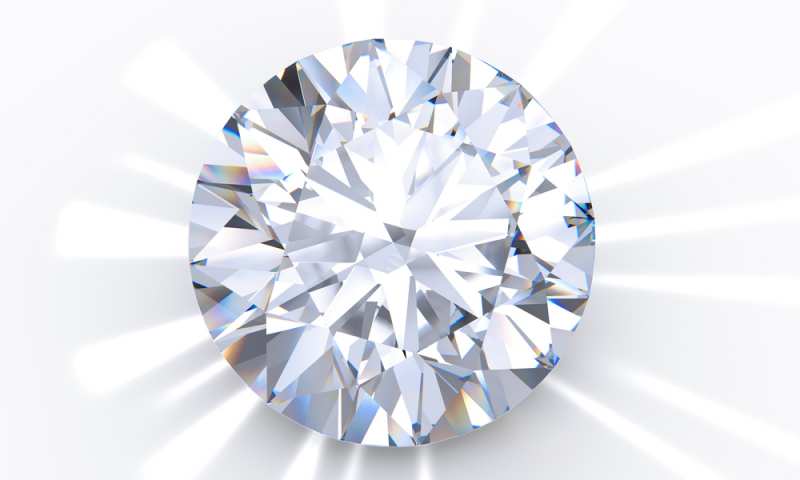
Round Brilliant Cut – The Sparkliest Diamond Cut
And there you have it—the round brilliant cut is the answer. This particular cut is designed to reflect light on each of its 58 facets, which is what creates its dazzling sparkle.
In the world of jewelry, it’s no secret that sparkle sells.
But the round brilliant cut was no accident. It was meticulously crafted to be the best. Renowned diamond cutter Marcel Tolkowsky developed this cut, using a specially designed formula that later became his Ph.D. thesis.
Who would have thought that the magic behind a diamond’s sparkle is rooted in mathematics and physics? Fascinating, isn’t it? But there’s more to discover about diamond cuts, so keep reading!
So, why is diamond cut so crucial?
Diamond cut is important both for gemologists who evaluate and assess diamonds and for you, the buyer.
Allow us to explain: Diamond cutters strive for perfection when creating jewelry pieces. Achieving the perfect cut, however, is no easy task—it requires precision.
Diamond cut is vital because it brings out symmetry, proportion, and polish.
The highest quality diamond cut is meticulously symmetrical. Each facet must be identical to its counterpart, down to the tiniest millimeter.
The round brilliant cut, specifically, has 58 precisely named facets to ensure absolute precision during the cutting process.
Proportion also plays a significant role. Nearly all diamond cuts are based on Tolkowsky’s diamond design, which is, once again, the round brilliant cut. Once cutters achieve symmetry and precise proportions, polishing the diamond further enhances its sparkle.
While we’re on the subject, let’s not forget three additional terms: brilliance, dispersion, and scintillation.
Brilliance refers to the intensity of reflected white light, while dispersion represents the white light refracted inside the diamond. Lastly, scintillation captures the mesmerizing bursts of light that create diamond sparkle.
Now, let’s discuss how diamond cuts are graded.
If we’re talking about choosing the best diamond cut, it’s crucial to understand the cut grade table. Here’s a quick overview:
- Excellent: These diamonds exhibit the highest level of brilliance and fire, making them sparkle the most. Excellent cut diamonds reflect light flawlessly and boast beautiful designs.
- Very good: Very good cuts are comparable to excellent cuts, with only subtle differences discernible to professional gemologists. They still reflect light and offer a high level of brilliance.
- Good: Good cuts are a solid choice, although they may not reflect as much light. If you’re on a tighter budget, this can be an efficient alternative.
- Fair: Fair cuts fall between good and poor quality. They reflect some light and are best suited for side stones.
- Poor: Poor-quality cuts should not be your top priority. Only consider them if your budget does not allow for better options. These diamonds offer minimal sparkle and reflectivity.
In essence, this cut grade table evaluates the following aspects:
- The diamond’s appearance when viewed face-up, including fire and brilliance
- The precision of the design
- The quality and method used for polishing the facets
Naturally, you may be wondering if the cut influences the price.
Absolutely! The more prestigious the cut, the higher the price tag. If you desire a round brilliant cut, you should be prepared to allocate a significant portion of your budget towards it.
Now, let’s dive into some real numbers. Here’s a breakdown of how much you can expect to pay for specific diamond cuts:
- Round: $2,220
- Princess: $1,917
- Emerald: $1,741
- Cushion: $1,515
- Radiant: $1,776
- Oval: $1,870
- Pear: $1,910
- Marquise: $2,066
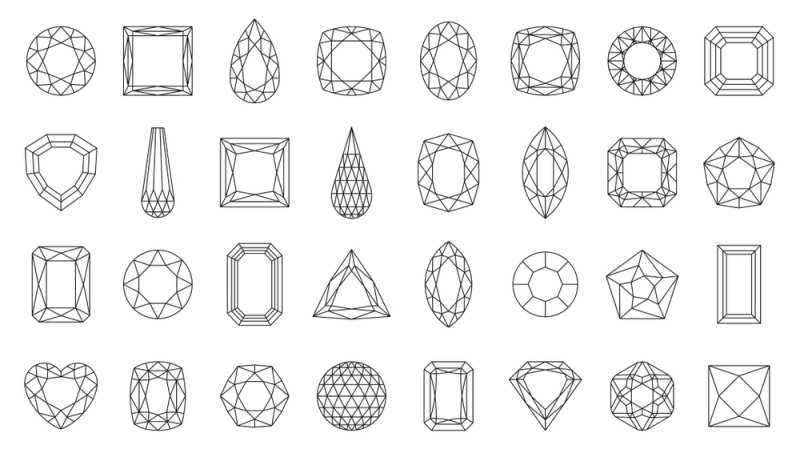
Other Popular Diamond Cuts
The round brilliant cut may be the most brilliant, but it’s not the only diamond cut available. Diamond techniques have evolved, offering a variety of shapes that perfectly complement one’s appearance. Let’s explore a few other important diamond cuts that might catch your attention.
Cushion Cut:
The cushion cut has been around for about 200 years. It features a rounded shape with pointed corners. Modern cushion cuts have improved their overall look and brilliance, gaining popularity through celebrity brides who chose this cut for their engagement and wedding rings.
Oval Cut:
The oval cut predates the round brilliant cut and dates back to the 14th century. Most designs of this cut have 58 facets, which is ideal. One advantage of the oval cut is that it tends to look larger on the hand regardless of its carat weight. Additionally, you can find this cut at relatively reasonable prices, but it’s important to ask your jeweler about the cut’s quality.
Princess Cut:
The princess cut is all about its angles. Its square shape adds a modern look and works well with various jewelry pieces, including earrings, rings, and necklaces. The design of the princess cut offers significant sparkle, comparable to the round brilliant cut, but it typically comes at a slightly higher price.
Radiant Cut:
The radiant cut gained popularity in the 1970s and is often likened to the princess cut. Although relatively new, this diamond cut has proven to be successful. Since it doesn’t yet have a rating on the cut grade table, it’s advisable to consult an expert before making a decision.
Emerald Cut:
The emerald cut has been a popular choice for wedding rings since the 1500s. Its specific design allows for better light reflection, enhancing clarity. However, emerald cuts can vary in proportions, so seeking an expert’s opinion is recommended.
It’s important to note that not everyone will love the radiant, princess, or round brilliant cut. Preferences vary, so it’s best to try out these cuts in person and make a final decision based on personal preference.
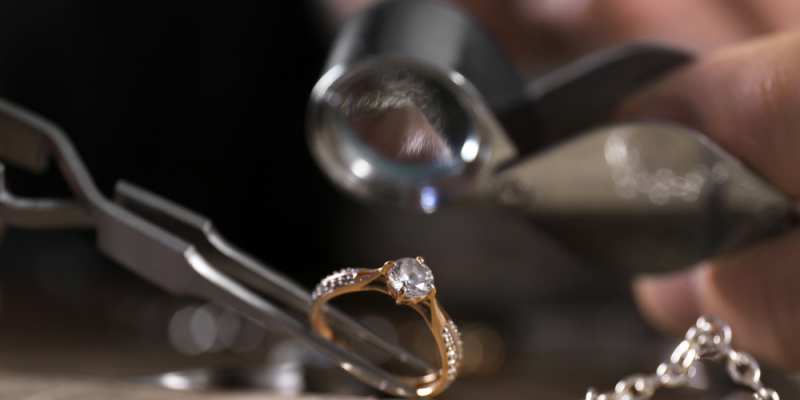
Avoid Buying A Poor Quality Diamond
You certainly want to avoid buying a diamond that looks cheap and low-quality, but many people get carried away by strong initial sparkle and make hasty decisions. To prevent common mistakes, consider the following tips before heading to the jewelry store.
First and foremost, inquire about the quality of the cut. It’s advisable to steer clear of good, fair, and poor diamond cuts if you want to make a lasting impression. While they may suffice for less significant purchases, investing a bit more for special occasions like weddings or engagements is worthwhile.
Remember that while diamonds are often associated with eternal durability, their quality can deteriorate over time. Buying a poor-quality diamond increases the likelihood of faster deterioration. Who wants a wedding ring that requires frequent repairs within the first few years of marriage? No one, of course.
Additionally, be cautious of any visible flaws in a diamond as they serve as red flags. This is particularly relevant for diamonds graded as I1, I2, and I3. While some flaws may only be noticeable under 10x magnification, others are visible to the naked eye. It’s crucial to avoid such diamonds, especially when choosing diamond wedding rings. Visible flaws can significantly diminish a diamond’s value, so don’t be enticed by a low price that masks poor quality.
To ensure you’re not sold a low-quality diamond, it’s best to have an expert accompany you or at least request a grading report that documents the diamond’s quality. This way, you can make an informed decision and have confidence in your purchase.
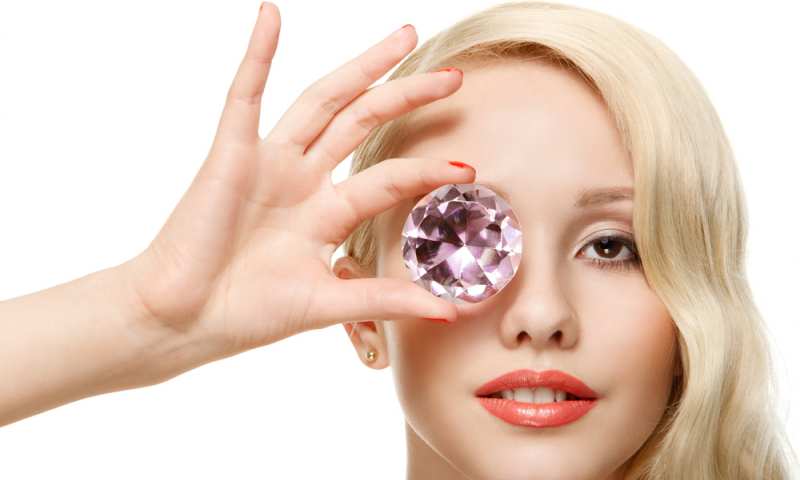
Do Fake Diamonds Sparkle?
Here’s the deal: both fake and real diamonds can sparkle, but there’s a distinctive characteristic that sets them apart.
By now, we’ve discussed the topic extensively, and you’re probably fully convinced that diamonds have a unique ability to reflect light. They possess internal brilliance and external fire, resulting in a grayish or white sheen.
Fake diamonds, however, exhibit a different type of reflection. When you place a fake diamond under a lamp or UV light, you’ll observe colorful reflections such as blue, green, yellow, or pink.
Consider this as your first warning sign: genuine diamonds do not sparkle with rainbow colors.
Related Read: Do Real Diamonds Sparkle in Rainbow Colors?
Are There Any Tests You Can Perform?
Since we’re discussing diamond authenticity, if you happen to have a magnifying glass, it can come in handy. Take a closer look at your diamond.
A real diamond, even of high quality, will have some signs of inclusions. These imperfections serve as a guarantee that you possess a genuine gemstone. On the other hand, a glass imitation will appear flawless, which is impossible for a real diamond.
If you don’t have a magnifying glass, you can try using a piece of newspaper. Place your diamond over the newspaper and observe. A real diamond should bend and refract light, hindering the black print from shining through. If you can read even a single word through the diamond, it’s not a good sign.
These simple tests can provide some initial insights into the authenticity of a diamond, but for a definitive evaluation, it’s recommended to consult with an expert or a reputable jeweler.
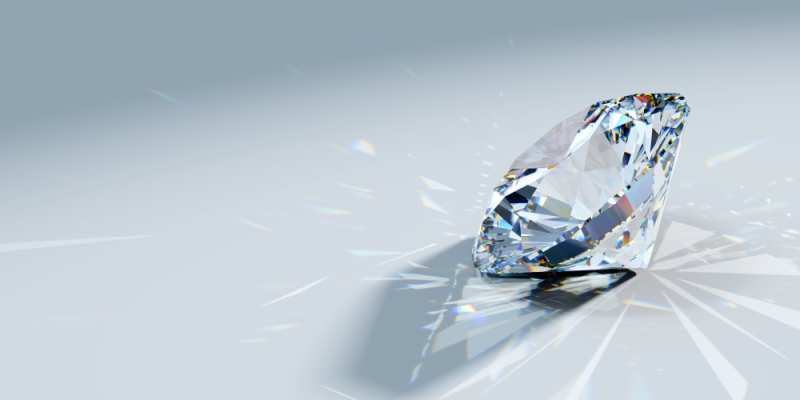
Final Words
Let’s quickly recap the key points we’ve covered:
- The round brilliant cut is renowned for its exceptional sparkle, but it comes with a higher price tag compared to other cuts.
- In the realm of jewelry, the round brilliant cut and other high-quality cuts are famous and more expensive options.
- Understanding the cut grade table is beneficial for assessing the desired quality of a diamond and making informed choices.
- Keep your budget in mind as higher-quality cuts can significantly increase the price. Alongside the round brilliant cut, consider other sparkling options like cushion, radiant, emerald, and princess cuts.
- Remain vigilant about fake diamonds. Although they can exhibit sparkle, their light will have a different quality. Genuine diamonds possess a clear, grayish shine, while fakes tend to emit colorful reflections.
By keeping these main points in mind, you’ll be better equipped to navigate the world of diamond cuts, make informed decisions, and choose a diamond that suits your preferences and budget.


